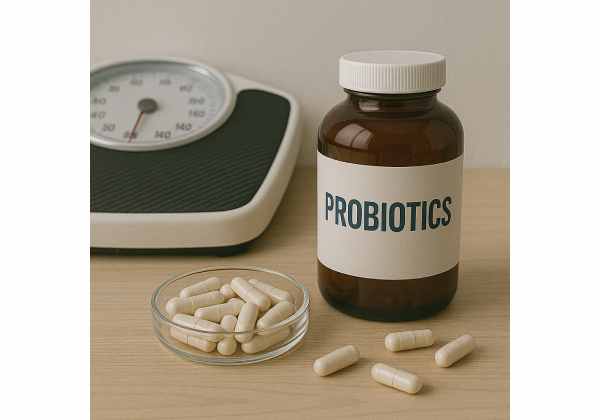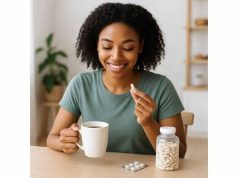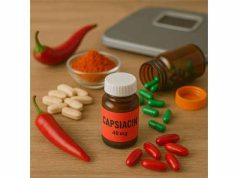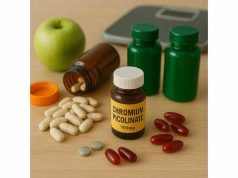
Probiotics promise a gentler approach to weight management: tune the gut, influence appetite and metabolism, and let small daily advantages add up. The reality is more nuanced. Certain strains show modest effects on body weight and waist size, especially when paired with protein-rich, high-fiber meals and consistent activity. This guide explains how probiotics might influence weight, which strains have the most encouraging human data, and how to choose and use a product without wasting money. If you are comparing supplements and prescription options side by side, start with our overview of medical options for weight management and use this article to decide whether probiotics deserve a place in your plan.
Table of Contents
- What are probiotics and do they help?
- How to use probiotics for weight loss
- Which strains have the best evidence?
- Common mistakes and troubleshooting
- Safety, who should avoid
- What the evidence shows
- A practical 4-week plan
- Frequently Asked Questions
What are probiotics and do they help?
Probiotics are live microorganisms that, when consumed in adequate amounts, confer a health benefit. Most belong to the Lactobacillus (now split into several genera) and Bifidobacterium groups, with a growing number of Bacillus (spore-forming) and Saccharomyces (yeast) products. For weight management, interest centers on how certain strains can:
- Increase production of short-chain fatty acids (SCFAs) like acetate and butyrate, which influence satiety hormones and fat storage.
- Modify bile acid metabolism, potentially improving fat handling and blood lipids.
- Nudge the gut-brain axis, subtly reducing cravings and reward-driven eating.
- Dampen low-grade inflammation, which is linked with insulin resistance.
Do they help with weight? Results are modest on average. In randomized trials, specific strains and multi-strain blends have produced small but measurable reductions in body weight, BMI, and waist circumference over 8–24 weeks. Typical effects land in the range of 0.5–2.0 kg of weight difference and 1–2 cm off the waist compared with placebo. Some individuals see more change; others see none. As with most nutrition tools, context matters: effects are larger when probiotics are combined with protein-anchored meals, soluble fiber, and fewer liquid calories.
Why small changes can still matter. A persistent, modest improvement—less snacking, slightly smaller portions, smoother appetite—can create a daily 100–200 calorie advantage. Over months, that adds up to several kilograms and better metabolic markers. Probiotics are not fat burners; they support the behaviors that produce a calorie deficit.
Strain specificity, not brand hype. Benefits are strain-dependent, not just species- or brand-dependent. For example, “Bifidobacterium lactis” is a species; only certain strains within that species show weight-related benefits in trials. Labels must name the full strain (letters/numbers), not just the species.
Where probiotics fit in a plan. Think of them as a low-risk add-on to a balanced program. They pair well with:
- A protein target at each meal.
- High-fiber plant foods (especially prebiotic fibers).
- Regular movement and adequate sleep.
If you are building the base of your plan, review our concise guide to safe weight-loss fundamentals first, then decide whether probiotics are worth testing.
Bottom line: Some strains can help a little—especially for waist reduction and appetite steadiness—but they are helpers, not heroes. Your eating pattern and routine carry the heavy load.
How to use probiotics for weight loss
You will get more from probiotics when you use them deliberately—right dose, right timing, right food environment.
1) Select an evidence-aligned product
- Choose a product that lists strain names (e.g., Bifidobacterium lactis B420) and provides colony-forming units (CFU) per serving.
- Practical daily ranges in studies are 1–10 billion CFU, sometimes higher. More is not always better; consistency beats dose escalation.
2) Pair with prebiotics and fiber
Probiotics perform better with fuel. Add prebiotic fibers (inulin, FOS, GOS) from food—onions, garlic, leeks, asparagus, oats, barley, beans—or from supplements if your diet is low in these foods. If you are comparing fiber types and dosing, see our overview of soluble fiber options.
3) Decide on foods vs capsules
- Fermented foods (yogurt with live cultures, kefir, fermented vegetables) deliver microbes plus bioactive compounds that support gut health.
- Capsules deliver specific strains at known doses. For weight-targeted effects, capsules often make it easier to control strain and CFU, while foods round out dietary quality.
4) Take them with food, daily
Taking probiotics with a meal can improve survival through stomach acid. Pick a time you can keep every day (breakfast is easiest) and stick with it for at least 8–12 weeks before judging results.
5) Align with a protein-forward, plant-rich plate
- Aim for 25–35 g protein per meal from yogurt, eggs, fish, tofu, poultry, lean meats, or legumes.
- Fill half the plate with vegetables and fruit; use whole grains and beans/lentils often.
- Replace sugary drinks with water, tea, or coffee.
6) Track the right signals
- Waist measurement (at the navel) every two weeks.
- A weekly average of body weight (to smooth daily fluctuations).
- Subjective appetite: note snacking urges, fullness, and energy.
7) Give it a fair trial, then reassess
After 12 weeks, decide: continue the same product, switch to a different strain profile, or stop if nothing changed. Keep the diet and activity habits either way—they drive most of the benefit.
Good-to-know tips
- If you take antibiotics, separate your probiotic by at least 2 hours and continue for 1–2 weeks after the course ends.
- Travel and stress can disrupt routines; keep a shelf-stable option in your bag.
- Mild gas or bloating often settles after one to two weeks as fiber and microbes adjust; if symptoms persist, reduce dose and re-titrate.
Which strains have the best evidence?
Evidence evolves, but several strain families recur in human trials that report small improvements in weight and waist. Remember: strain matters—letters and numbers after the species name indicate a specific, studied lineage.
Encouraging strain categories
- Bifidobacterium lactis strains (e.g., B420 and related): linked with waist and fat-mass reductions and better appetite control indicators.
- Lactobacillus gasseri strains (e.g., LG2055): associated with abdominal fat and waist reductions in several trials, often via fermented dairy vehicles.
- Lactobacillus rhamnosus strains (e.g., specific CGMCC lineages): reported benefits in some female cohorts for weight maintenance after loss.
- Multi-strain blends combining Bifidobacterium and Lactobacillus often perform as well as or better than single strains, likely due to complementary pathways.
What about spore-formers and yeasts?
- Bacillus coagulans and Bacillus subtilis strains show promise for GI comfort and may indirectly support adherence to a healthier diet; weight effects are less consistent.
- Saccharomyces boulardii supports gut integrity during antibiotics or traveler’s diarrhea; weight-specific data are limited.
Dosing and duration cues
- Most positive studies use 1–10 billion CFU/day for 8–12 weeks.
- Multi-strain blends typically supply a combined CFU; ensure each constituent strain is listed.
How to read labels for strain quality
- Look for the full strain code (not just species).
- Check CFU at expiration, not at manufacture.
- Prefer products with storage guidance (refrigerated or shelf-stable with desiccants) and lot numbers for traceability.
- When in doubt, cross-reference the strain with the manufacturer’s published data sheets.
If you are building label-reading skills for supplements generally, our quick guide on how to read supplement labels walks through serving sizes, forms, and red flags.
Set expectations by category
- Waist change: the most consistent outcome; some strains reduce visceral fat markers modestly.
- Scale change: small averages; individual responses vary.
- Appetite steadiness: many users report fewer cravings, a practical win even without dramatic scale movement.
Important caveat: Not every product using these species contains the studied strain or the studied dose. Strain substitution is common and often unannounced.
Common mistakes and troubleshooting
Mistake 1: Expecting a shortcut
Probiotics are not fat burners. They support habits that create a calorie deficit; they do not replace those habits. Anchor meals with protein and fiber and keep liquid calories low.
Mistake 2: Choosing by brand, not strain
A species name alone is not enough. Fix: Buy products listing full strain codes and CFU at expiration.
Mistake 3: Under-fueling the microbes
Low fiber diets starve beneficial microbes. Fix: Add prebiotic fibers from beans, lentils, oats, barley, fruit, and vegetables. Increase gradually to avoid gas.
Mistake 4: Stopping too soon
Gut ecosystems adapt slowly. Fix: Give a 12-week trial before judging; track waist and appetite, not just weight.
Mistake 5: Ignoring storage and timing
Heat and moisture kill live organisms. Fix: Follow storage directions; take with a meal at roughly the same time daily.
Mistake 6: Overlapping products endlessly
Switching weekly prevents adaptation. Fix: Commit to one product for a full trial, then change one variable at a time.
Troubleshooting guide
- Gas, bloating, or cramps: Reduce dose, add soluble fiber slowly, and increase fluids; symptoms usually ease within two weeks.
- No change after 12 weeks: Switch to a different strain profile or discontinue; keep diet and movement anchors.
- On antibiotics: Take your probiotic two hours apart; continue 1–2 weeks after the course.
- Confidence in quality: Favor brands participating in independent verification. If you are new to third-party programs, see our explainer on third-party testing.
Signals you are on the right track
- Fewer late-night cravings.
- More consistent portion sizes without effort.
- Gradual reductions in waist even when weight is flat week to week.
Safety, who should avoid
For most healthy adults, probiotics are well tolerated. Mild gas, bloating, or stool changes are the most common early effects and typically decline within two weeks. That said, probiotics are not appropriate for everyone.
Who should avoid probiotic supplements or use only with medical supervision
- People who are immunocompromised (due to illness, chemotherapy, or advanced HIV).
- Those with central venous catheters or prosthetic heart valves.
- Individuals with a history of recurrent bloodstream infections or pancreatitis.
- Premature infants and critically ill patients (hospital-grade decisions only).
- Anyone with short bowel syndrome or severe active colitis unless advised by a specialist.
Medication and condition considerations
- Antibiotics: separate dosing by 2 hours; some strains are temporarily suppressed.
- Antifungals: may reduce viability of yeast-based probiotics (e.g., S. boulardii).
- Histamine intolerance or SIBO: some fermented foods worsen symptoms; a low-histamine or low-FODMAP phase may be needed before re-introducing probiotics.
Pregnancy and breastfeeding
- Fermented foods are generally part of a healthy diet when handled safely. For supplement use, discuss with your clinician first; data are reassuring for many strains, but decisions should be individualized.
Allergy notices
- Some products contain dairy or soy residues from growth media. Read labels closely if you are allergic.
When to stop and call your clinician
- Fever, chills, or worsening abdominal pain after starting a probiotic.
- Persistent severe diarrhea or signs of dehydration.
- New or concerning neurologic symptoms (rare).
Remember: if probiotics do not improve your waist, appetite steadiness, or digestion after a fair trial, stopping is reasonable. Other strategies may deliver a better return on your effort.
What the evidence shows
A steady pattern emerges across randomized trials and meta-analyses:
1) Effects are small but real for some people
Compared with placebo, modest average reductions in body weight (often 0.5–2.0 kg), BMI (around 0.2–0.5 points), and waist (~1–2 cm) appear over 8–24 weeks with specific strains or multi-strain blends.
2) Waist reduction is the most reliable signal
Even when the scale barely moves, reductions in abdominal fat (measured by waist and sometimes imaging) are more consistent, aligning with metabolic benefits.
3) Baseline diet and fiber intake modify the response
Higher soluble fiber intake predicts better results, likely through prebiotic effects and increased SCFA production. Diets heavy in ultra-processed foods often blunt benefits.
4) Strain matters more than CFU “arms race”
Beyond a threshold (often 1–10 billion CFU/day), higher doses do not guarantee better outcomes. Strain selection and adherence drive results.
5) Probiotics are complementary, not competitive, with other therapies
They pair well with calorie-controlled, protein-forward eating, resistance training, and—when appropriate—medical therapies. If you are weighing when to use medication vs nutrition-first approaches, see our overview of weight-loss medications for context and thresholds.
Limitations to keep in mind
- Study heterogeneity is high: different strains, doses, delivery vehicles, and populations.
- Many trials are short-term; long-term maintenance data are fewer.
- Publication bias favors positive studies; interpret small effects cautiously.
Practical takeaway
Probiotics can be a helpful adjunct for some, especially for waist management and appetite stability. Treat them as a 12-week experiment alongside diet and movement—keep what works; drop what does not.
A practical 4-week plan
Use this as a structured, low-friction way to test probiotics while reinforcing the fundamentals that deliver most of the weight benefit.
Week 0: Set up
- Choose a strain-specific product (single or multi-strain) with 1–10 billion CFU and clear strain codes.
- Stock fermented foods you enjoy (live-culture yogurt, kefir, fermented vegetables).
- Plan four default meals that hit 25–35 g protein with vegetables and whole grains.
- Measure waist at the navel, record a 7-day average weight, and set sleep and step goals.
Week 1: Start gently
- Take your probiotic with breakfast daily.
- Add one extra serving of soluble fiber (oats or beans) and one fermented food per day.
- Replace one sugary drink with water or tea.
Week 2: Build consistency
- Keep daily dosing; adjust timing if you notice reflux or discomfort.
- Add a second high-fiber serving (barley, lentils, fruit with peel).
- Complete two short resistance sessions (15–25 minutes) to preserve lean mass.
Week 3: Optimize
- Audit evening eating: choose a protein-rich snack if needed (Greek yogurt, cottage cheese, edamame).
- Track craving frequency and portion ease—these behavior signals often improve before the scale.
- Maintain hydration; aim for pale-yellow urine.
Week 4: Review
- Re-measure waist and calculate a weekly weight average.
- If waist is down or cravings are calmer, continue. If not, decide whether to try a different strain profile for another 8–12 weeks or discontinue and focus on fiber-rich, protein-anchored meals without supplementation.
What success looks like
- Waist down by 1–2 cm over a month.
- More predictable appetite and fewer impulsive snacks.
- A sustainable routine that does not rely on willpower alone.
Cost-savvy tip
If a multi-strain product works, you do not need the highest CFU on the shelf. Pay for strain specificity, quality control, and your own response, not for mega-dose marketing.
Frequently Asked Questions
Which probiotic strains are best for weight loss?
No single strain works for everyone. Trials most often highlight Bifidobacterium lactis lineages (such as B420), Lactobacillus gasseri strains (like LG2055), and selected Lactobacillus rhamnosus strains. Multi-strain blends can perform well. Look for full strain codes and give any product 8–12 weeks.
How long before probiotics affect weight?
Plan a 12-week trial. Appetite steadiness and less grazing may appear in 2–4 weeks; waist changes often precede clear scale movement. Track a weekly average weight and waist circumference to detect trends without day-to-day noise.
Do fermented foods work as well as capsules?
They serve different purposes. Fermented foods improve overall diet quality and provide live cultures plus bioactive compounds. Capsules deliver defined strains at known doses. Many people combine both: a strain-specific capsule and one fermented food daily.
Are probiotics safe to take daily?
For most healthy adults, yes. Expect occasional gas or bloating early on, which usually settles within two weeks. People who are immunocompromised, have central lines, or serious heart valve disease should avoid probiotic supplements unless a clinician recommends them.
What dose should I take?
Most studies use 1–10 billion CFU per day. Start in that range and focus on daily adherence and strain selection, not chasing higher CFU. Take with a meal, ideally at the same time every day, and reassess after 8–12 weeks.
Can I take probiotics with antibiotics?
Yes, but separate by about 2 hours to reduce kill-off. Continue the probiotic for 1–2 weeks after finishing antibiotics. Expect temporary changes in gut symptoms during the antibiotic course.
What if nothing changes after three months?
End the experiment or try a different strain profile. Keep the habits that matter most for weight—protein at meals, soluble fiber, resistance training, and sleep. Probiotics are optional; fundamentals are not.
References
- Effects of oral supplementation of probiotics on body weight and visceral fat in obese patients: a meta-analysis and systematic review 2025 (Systematic Review)
- Probiotic With or Without Fiber Controls Body Fat Mass, Associated With Serum Zonulin, in Overweight and Obese Adults—Randomized Controlled Trial 2016 (RCT)
- Effect of Lactobacillus gasseri SBT2055 in fermented milk on abdominal adiposity in adults in a randomised controlled trial 2013 (RCT)
- Short-Chain Fatty Acids and Human Health: From Metabolic Pathways to Current Therapeutic Implications 2024
- Emerging issues in probiotic safety: 2023 perspectives 2023
Disclaimer
This article is for general education and does not replace personalized medical advice, diagnosis, or treatment. Always speak with a qualified health professional before starting, stopping, or combining supplements or medications, changing doses, or making major diet and exercise changes—especially if you have chronic conditions, take prescription drugs, are pregnant, or are planning pregnancy.
If this helped you, please share it with someone building a healthy routine. For future guides and updates, follow us on the social platform you already use—Facebook, X, Instagram, or LinkedIn.










